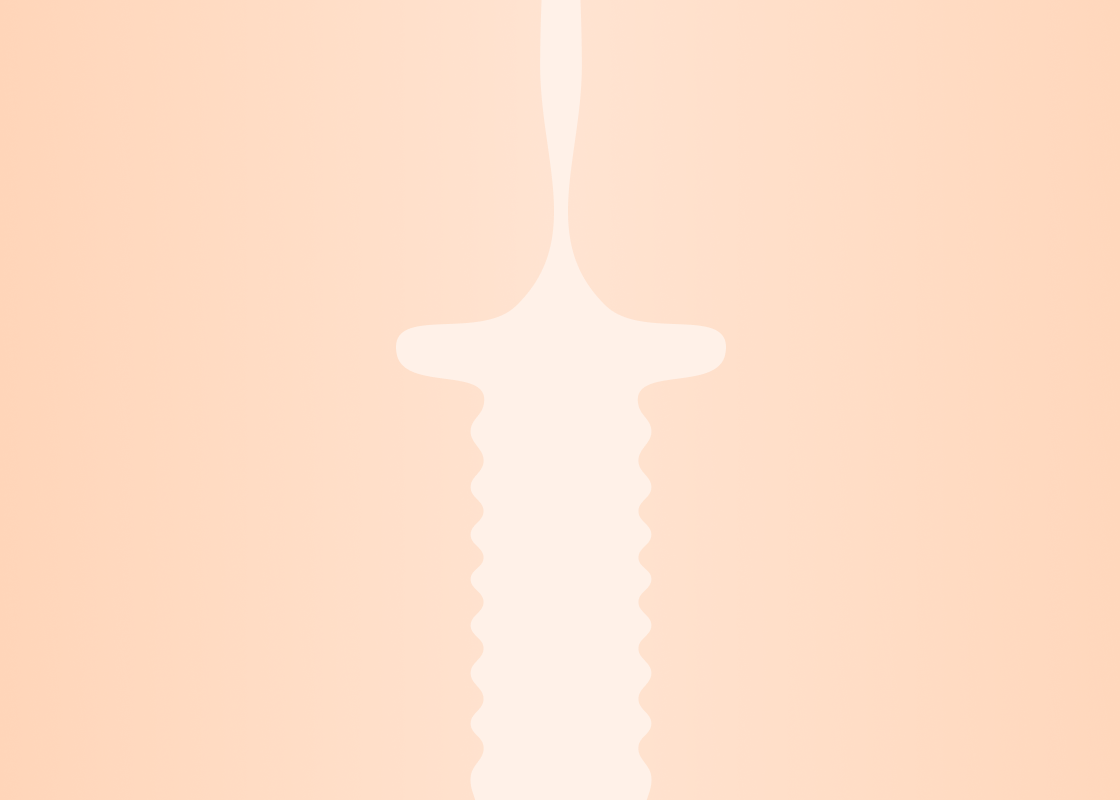One of the most common misconceptions about the vagina is this: It's the entire genital area that lies between the legs.
If you still recall any part of your Science lessons or Sex Ed, you'll realise that the vagina is, in fact, only one of the many different parts that make up the lower reproductive tract.
And while the vagina is widely recognised for its role in sexual reproduction, it can serve many different functions throughout your lifetime, from immune defence to childbirth [1].
As much as we think we might know about this part of the body—after all, you may own one yourself— there are still many popular myths to bust regarding its function, anatomy, and location.
In this article, we'll explore what the vagina really is, where it's located, what it does, and how it changes through different seasons of life. So, buckle up; what you'll learn about this intriguing body part might actually surprise you!
What is the Vagina?
Let's first begin by addressing what the vagina really is.
The vagina is a reproductive organ that plays a vital role in reproduction and sexual pleasure [1]. It is the tube that connects the reproductive tract inside your body to the outside world.
This makes pregnancy possible since the vagina allows sperm to enter the body and fertilise an egg. It's the exit for your baby during childbirth and the opening for dead tissue and blood to leave the body during menstruation [1].
Anatomy and Location of the Vagina
The vagina is a stretchy, muscular tube ranging from 7 to 10 cm in length. It starts from the outer part of your genitals, known as the vulva, and extends up to the cervix (the lower part of your womb).
But how does a tube in your body keep something as small as a tampon in place and still allow a much larger baby to pass through?
Well, the vaginal canal has a few tricks up its sleeve that help it stretch and then return to its original form as needed.
A deeper dive into the anatomy of the vagina
The walls of the vagina are made up of three layers: the innermost mucosal layer, the middle muscular layer, and the outermost fibrous layer [1].
The middle layer comprises smooth muscle cells, which can contract and relax. When the vagina is in its normal (resting) state, these smooth muscle cells remain active, applying consistent pressure and support that can hold something like a tampon in place [2].
When not aroused, the vagina also forms a collapsed tube with the potential to expand. This tube doesn't form a simple straight line, nor can scientists pinpoint its resemblance to any known geometric shape. Earlier research notes that the cross-section of the vagina forms an "H," but more recent studies suggest that it forms a "W." [3]
So, how does this collapsed vaginal tube expand?
Well, the innermost mucosal layer has structures known as rugae. These form the folds, ridges, and bumps found in the vaginal canal, allowing the vagina to expand and then return to its normal state as needed [4].
Where is the vagina located?
Here's what you need to know [1]:-
- The vaginal opening lies between the anus and the opening of the urethra (a thin tube that channels urine from your bladder out of your body).
- This opening is protected by the labia, which are folds of skin surrounding this opening.
- The vaginal canal is located behind the bladder and in front of the rectum (the final portion of the large intestine).
The Function of the Vagina
The most well-known and prominent function of the vagina is sexual reproduction.
However, the vagina serves multiple functions, including the following:-
- Accepts the penis: The vagina accepts the penis during sexual intercourse and acts as a reservoir where semen can collect before the sperm swim upwards in search of a viable egg [5].
- Childbirth: The vagina allows a baby to exit from its mother's body during childbirth.
- Release of mucus and tissues: During menstruation, your body releases dead tissues, mucus, and blood. These exit your body through the vagina [5].
- Immune defence: The acidic pH and vaginal microflora (microorganisms present inside your vagina) can help to protect against harmful pathogens [1].
- Sexual pleasure: The nerve endings in your vaginal walls can be stimulated to invoke sexual arousal and pleasure [1].
How Does the Vagina Change Through Different Courses of Life?
Like many other parts of your body, the vagina undergoes different changes as you journey through various seasons of life.
Let's explore how different factors, such as age, pregnancy, and menstruation, lead to changes in the function and structure of your vagina.
How does the vagina change with age?
You can expect significant changes to occur to your vagina as you advance in age due to hormonal fluctuations.
At puberty, the production of the hormone estrogen begins to rise, and this causes the thickening of the vaginal lining and an increase in the size of the vagina. At the same time, your body starts to produce more cervical and vaginal fluids [6].
During this stage, significant changes also occur to the microflora in your vagina. The number of lactic acid-producing microorganisms increases throughout puberty. And this helps maintain the right pH in your vagina and protect the vaginal environment from the invasion of harmful bacteria [7].
As you grow older, you'll gradually approach the perimenopause/menopause stage. During this time, the estrogen levels in your body begin to decline, resulting in the thinning of the vaginal lining. The mucosal folds in your vagina (rugae) begin to smooth out, and you may also notice vaginal dryness and a reduction in lubrication as you advance in age. This can lead to discomfort during sex [7].
Additionally, the microfloral population in your vagina begins to experience changes, leading to a more alkaline environment. This may make you more susceptible to infections [6].
How does the vagina change throughout the menstrual cycle?
Once again, the fluctuation in hormone levels orchestrates the changes in the vagina that occur throughout the menstrual cycle. For instance, the thickness of the vaginal lining is the highest mid-cycle due to estrogen stimulation [6].
Scientists are still studying how the vaginal microflora changes throughout the cycle. However, some research suggests that the balance of vaginal flora may be less stable during menstruation, leading to a rise in vaginal pH [6, 8].
How does the vagina change during pregnancy?
During pregnancy, blood supply increases, leading to a deeper colouration of the vulva. And in preparation for delivery, the muscular fibres of the vaginal wall increase in size [6].
As the baby is being delivered, the muscular tissues relax while the rugae flatten, allowing the vaginal tract to expand for the baby to pass through [6].
How does the vagina change during sex?
Upon sexual arousal, a signalling molecule known as nitric oxide is released. While the vagina itself contains no glands, the release of nitric oxide causes fluids to leak from surrounding capillaries, and these fluids then pass through the vaginal wall to serve as lubrication during sex [1].
At the same time, the vagina also dilates and lengthens as the smooth muscles of the vagina relax, allowing the penis or penetrating object to enter. During orgasm, rhythmic contractions of the vaginal walls occur [9].
Tampons, Menstrual Cups, and The Vagina
Your vagina can naturally hold something like a tampon or menstrual cup in place. This is due to vaginal muscles that remain active at rest, applying tension so a tampon or menstrual cup doesn't fall out of place [2].
In general, tampons are unlikely to impact your vaginal health when used correctly. In fact, the FDA evaluates the safety of any tampons before they can be legally marketed in the US. The FDA has cleared single-use tampons. However, reusable ones have not been FDA-approved yet, as they can increase the risk of fungal, yeast, and bacterial infections of the vagina [10].
Menstrual cups are also safe to use, according to some research. Based on these findings, using menstrual cups did not lead to any harm or injuries to the vagina or cervix and did not increase the risk of vaginal infections. Surprisingly, researchers noticed that menstrual cups might, in fact, lead to a lower infection risk compared to pads and tampons [11].
Vaginal Discharge and Other Vaginal Symptoms: What's Not Normal?
"What are some signs that something's wrong? Why does my vagina smell, itch, or burn, and do I need to see a doctor? Does a change in the colour of my discharge warrant a visit to the doctor's clinic?"
It's completely understandable to have some concerns about the appearance of your discharge and other related symptoms.
Vaginal discharge can very well be normal. If you've yet to experience menopause, you can expect your vagina to secrete about half to one teaspoon of vaginal discharge each day. This vaginal discharge is typically mucus-like, thick, clear or white and mostly has no odour [12].
However, if your vagina discharge comes with certain symptoms, you may be experiencing an infection or a bodily reaction to a foreign substance. These signs and symptoms include [12]:-
- Greenish or yellowish discharge with a foamy texture
- Itching, redness, soreness, or a burning sensation in the genital area
- Bad vaginal odour
- Pain during sex or urination
- Vaginal discharge with tinges of blood
The inne minilab is an at-home device that can help you keep track of your vaginal and hormonal health. This device syncs up with a smartphone app that securely stores and analyses your hormonal data based on saliva tests while enabling you to keep track of your vaginal discharge and symptoms.
By understanding what's normal for you, you can seek prompt medical advice at the first sign of trouble.
Like any part of the body, the vagina is susceptible to illness, injury, and infection. But by being observant of your vaginal health, you'll be able to sense when something is off and get the treatment you need.
References
- Gold JM, Shrimanker I. Physiology, Vaginal. [Updated 2022 Jul 25]. In: StatPearls [Internet]. Treasure Island (FL): StatPearls Publishing; 2022 Jan-. Available from: https://www.ncbi.nlm.nih.gov/books/NBK545147/
- Clark, G. L., Pokutta-Paskaleva, A. P., Lawrence, D. J., Lindsey, S. H., Desrosiers, L., Knoepp, L. R., Bayer, C. L., Gleason, R. L., Jr, & Miller, K. S. (2019). Smooth muscle regional contribution to vaginal wall function. Interface focus, 9(4), 20190025. https://doi.org/10.1098/rsfs.2019.0025
- Barnhart, K. T., Izquierdo, A., Pretorius, E. S., Shera, D. M., Shabbout, M., & Shaunik, A. (2006). Baseline dimensions of the human vagina. Human Reproduction, 21(6), 1618–1622. https://doi.org/10.1093/humrep/del022
- ScienceDirect. (2016). Vagina. ScienceDirect. Retrieved January 5, 2023, from https://www.sciencedirect.com/topics/agricultural-and-biological-sciences/vagina
- Nguyen JD, Duong H. Anatomy, Abdomen and Pelvis, Female External Genitalia. [Updated 2022 Jul 25]. In: StatPearls [Internet]. Treasure Island (FL): StatPearls Publishing; 2022 Jan-. Available from: https://www.ncbi.nlm.nih.gov/books/NBK547703/
- Farage, M., & Maibach, H. (2005). Lifetime changes in the vulva and vagina. Archives of Gynecology and Obstetrics, 273(4), 195–202. https://doi.org/10.1007/s00404-005-0079-x
- Szymański, J. K., Słabuszewska-Jóźwiak, A., & Jakiel, G. (2021). Vaginal Aging-What We Know and What We Do Not Know. International journal of environmental research and public health, 18(9), 4935. https://doi.org/10.3390/ijerph18094935
- Eschenbach, D. A., Thwin, S. S., Patton, D. L., Hooton, T. M., Stapleton, A. E., Agnew, K., Winter, C., Meier, A., & Stamm, W. E. (2000). Influence of the Normal Menstrual Cycle on Vaginal Tissue, Discharge, and Microflora. Clinical Infectious Diseases, 30(6), 901–907. https://doi.org/10.1086/313818
- Woodard, T. L., & Diamond, M. P. (2009). Physiologic measures of sexual function in women: a review. Fertility and sterility, 92(1), 19–34. https://doi.org/10.1016/j.fertnstert.2008.04.041
- Office of the Commissioner. (2020, September 30). The Facts on Tampons—and How to Use Them Safely. U.S. Food And Drug Administration. https://www.fda.gov/consumers/consumer-updates/facts-tampons-and-how-use-them-safely
- Van Eijk, A. M., Zulaika, G., Lenchner, M., Mason, L., Sivakami, M., Nyothach, E., Unger, H., Laserson, K., & Phillips-Howard, P. A. (2019). Menstrual cup use, leakage, acceptability, safety, and availability: a systematic review and meta-analysis. The Lancet Public Health, 4(8), e376–e393. https://doi.org/10.1016/s2468-2667(19)30111-2
- Sobel, J. (2021, March). Patient education: Vaginal discharge in adult women (Beyond the Basics). UpToDate. Retrieved January 6, 2023, from https://www.uptodate.com/contents/vaginal-discharge-in-adult-women-beyond-the-basics/print




